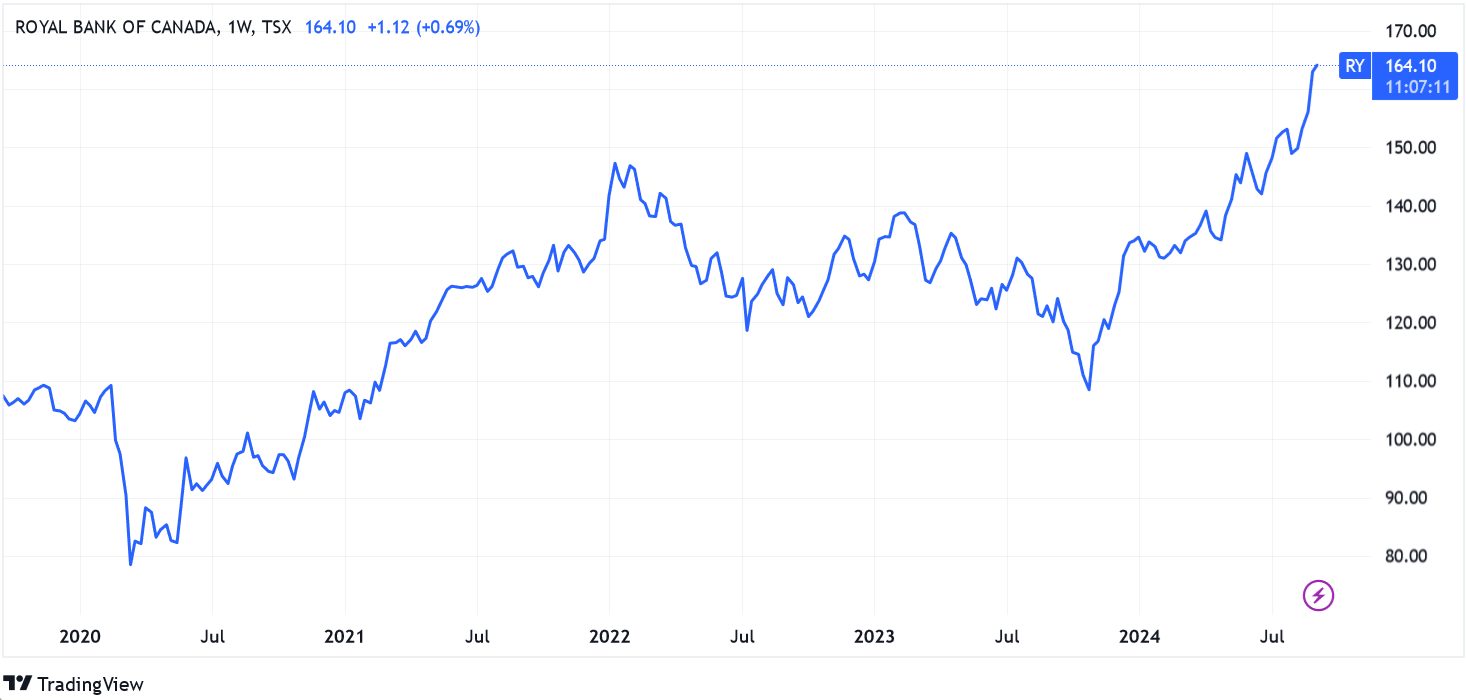Day Trading in Canada



Canada is home to a thriving day trading community. Its GDP ranks among the top 10, and it possesses vast natural resources, a thriving financial services sector, and a streamlined regulatory system to protect investors.
Discover how to start day trading in Canada. This guide for beginners unpacks the assets that can be exchanged, discusses the regulatory and tax landscape, and unpacks a trade on a prominent Canadian stock.
Quick Introduction
- Shares are chiefly traded on the Toronto Stock Exchange (TSX), while Canadians can deal in commodities like crude oil from the oil sands of Alberta and natural gas given its substantial reserves. Forex trading in Canada is also huge, with trading pairs like USD/CAD.
- Canada’s regulatory regime has been simplified in recent years. Markets are now overseen by the Canadian Investment Regulatory Organization (CIRO), which is categorized as a ‘green tier’ regulator under DayTrading.com’s Regulation & Trust Rating.
- Day traders may need to pay income tax at the federal and provincial level on any profits that they make, with rates ranging from 15% to 33% depending on total income, and payable to the Canada Revenue Agency (CRA).
Top 4 Brokers in Canada
Following our latest evaluations, these 4 CIRO-regulated platforms emerged as the best for Canadian day traders:
What Is Day Trading?
Day trading is a fast-paced strategy where investors execute multiple trades throughout the day to capture small price fluctuations.
Traders usually operate during regular market hours when liquidity is better, allowing for quicker and cheaper transactions. The potential for market volatility is also higher at these times, and therefore so is the opportunity for traders to book a profit.
Its rapid tempo means that day trading is also high risk, especially for those who use leverage (borrowed funds) to maximize potential returns. As a result, traders should ensure that they put proper risk management procedures in place before dealing.
Day traders that deal in equities typically do business on the Toronto Stock Exchange (TSX).Other exchanges like the TSX Venture Exchange (TSXV) – which is designed for startups and smaller companies – and the Canadian Securities Exchange (CSE) lack the liquidity that is vital for successful short-term trading strategies.
The TSX is one of the largest stock exchanges in the world with a total market capitalization north of $4.6 trillion*. Canada’s position as a natural resources hotspot means that mining companies feature heavily on the exchange, while financial services, real estate and technology businesses are also well represented.
Trading on the TSX typically takes place on weekdays between 09:30 and 16:00 Eastern time.
*$ = Canadian dollars
Is Day Trading Legal In Canada?
Yes. Capital markets are regulated by the Canadian Investment Regulatory Organization (CIRO), which was formed in 2023 following the merger of the Investment Industry Regulatory Organization of Canada (IIROC) and the Mutual Fund Dealers Association (MFDA).
CIRO says that it is committed to “the protection of investors, providing efficient and consistent regulation, and building Canadians’ trust in financial regulation and the people managing their investments.”
The body – which oversees trading activity on Canada’s debt and equity marketplaces, including activities like trading – was introduced to simplify the country’s fragmented regulatory landscape, cut costs for firms, and reduce risk to investors.
Another body, the Canadian Securities Administrators (CSA), is also involved in the regulation of financial markets. It unifies provincial and territorial securities regulators under a single umbrella “to share ideas and work at designing policies and regulations that are consistent across the country and ensure the smooth operation of Canada’s securities industry.”
How Is Day Trading Taxed In Canada?
Understanding how day trading taxes in Canada work is essential before you start dealing.
Serious traders must notify the Canada Revenue Agency (CRA), the body responsible for administering the country’s tax system, of any profits they make.
The tax year runs from 1 January to 31 December, and tax returns must be submitted by 30 April of the following year.
Investors are required to pay federal income tax at the following rates:
- 15% on taxable income of $55,867 or less, plus
- 5% on taxable income over $55,867 up to $111,733, plus
- 26% on taxable income over $111,733 up to $173,205, plus
- 29% on taxable income over $173,205 up to $246,752, plus
- 33% on taxable income over $246,752
Day traders may also have to pay income tax at the provincial or territorial level depending on where they reside. A breakdown of these tax rates can be found on the CRA website.
Getting Started
To begin day trading in Canada, you’ll need to complete three steps:
- Choose a top day trading broker in Canada. Consult the CIRO website to ensure any firms you’re considering are above board. Next, consider factors such as the quality of its charting platform (TradingView is excellent), the size of trading fees (low spreads are key for short-term traders), and the amount of leverage on offer (typically 1:50 in Canada), to find the company that’s best for you.
- Open an account. Brokers will ask a standard set of questions on your personal circumstances, and you’ll need to provide proof of identification and residence at this stage (such as a copy of your Canadian Provincial or Territorial ID card). They will also quiz you on your trading history, objectives and style, with day trading falling under the higher-risk forms of trading styles.
- Deposit some Canadian dollars. With your account up and running, you’ll need to inject it with money so you can begin buying Canadian stocks for instance. You’re usually able to do this through a debit card, though you may also have the option of using an online payments provider, such as PayPal or Canada’s Interac e-Transfer. A broker with a CAD account can minimize conversion costs and provide a streamlined trading experience for Canadians.
A Day Trade In Action
With these tasks completed, you should be ready to start trading on Canada’s financial markets or global instruments. But what could a short-term trade look like?
Let’s consider a scenario trading one of the country’s largest listed shares…
The Background
My plan involves buying Royal Bank of Canada shares just before the Bank of Canada (BoC) makes its next interest rate statement.
Having scoured recent economic data, analyst notes, and fresh comments from rate-setters, I conclude that the BoC will likely raise interest rates to 4.25%. The broader market, meanwhile, is pricing in a freeze in the benchmark rate at 4%.
If I’m correct, shares across the banking sector might rise in value. This is because higher interest rates are beneficial to Royal Bank of Canada and its competitors’ margins.

I don’t just rely on fundamental analysis before placing my trade, however. I also study price and volume data on the charts to get a better handle on where the bank’s share price might head to.
Technical analysis is a fundamental part of many day traders’ strategies. Chart patterns, trends, and indicators can help traders identify potential entry and exit points, improving their chances of executing profitable trades.
The Trade
The BoC is scheduled to make its rate statement at 09:45 Eastern time. So I open my trading platform ten minutes beforehand and prepare to punch in my trade.
My strategy involves close risk management that can help me lock in gains or limit losses. With Royal Bank of Canada shares trading at $162.45 per share, I set a ‘take profit’ order at $162.93 and a ‘stop loss’ instruction at $162.31.
These orders help me manage risk by automatically closing my trade if the bank’s shares either rise or fall to my pre-set levels, whichever comes first.
Several minutes after I completed my trade, the BoC announces a hike in interest rates to 4.25%, as I’d predicted. Royal Bank of Canada shares rise in the aftermath, moving through my ‘take profit’ instruction within about half an hour, and giving me a profit of $0.48 for each share I bought.
Bottom Line
Canada’s large free-market economy makes it a natural bedfellow for day traders. Individuals can deal in a wide range of financial instruments and can expect a robust level of protection from bad actors through the CIRO.
Canadians should check that the broker they’re considering using is licensed before handing over any money. Remember that day trading is a high-risk strategy, and that as an investor, you should never trade with money that you can’t afford to lose.
To get started, browse DayTrading.com’s selection of the best day trading platforms in Canada.
Recommended Reading
Article Sources
- Toronto Stock Exchange (TSX)
- Canadian Securities Exchange (CSE)
- Market Intelligence Report - TSX
- Canadian Investment Regulatory Organization (CIRO)
- MFDA and IIROC Members Approve the Creation of a Single New SRO – Canadian Securities Administrators
- Canadian Securities Administrators (CSA)
- Canada Revenue Agency (CRA)
- GDP Ranked by Country - World Population Review
- Income Tax Rates for Individuals - CRA
The writing and editorial team at DayTrading.com use credible sources to support their work. These include government agencies, white papers, research institutes, and engagement with industry professionals. Content is written free from bias and is fact-checked where appropriate. Learn more about why you can trust DayTrading.com



